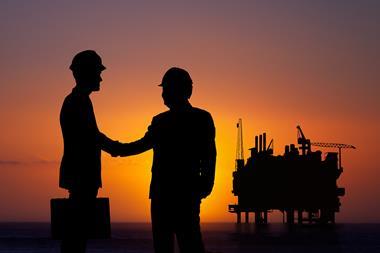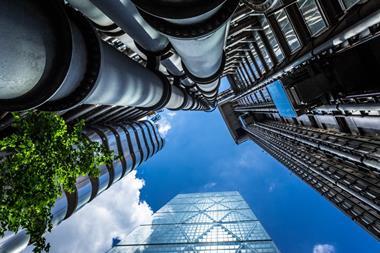While the environmental benefits of wind turbines have been well documented, Bernard Connolly reports on the dangers of fire and contamination to these sites and the value of bringing in specialist disaster recovery assistance when such an event occurs
When you look at the development of wind turbines, it seems such good news from an environmental standpoint. There are currently around 1,800 wind turbines across 137 sites in the UK, generating enough electricity to power over a million homes and reduce annual CO2 emissions by around 4.5m tonnes.
Another 30 or so wind farms are already under construction, and planning consent has been granted for around 90 more.
But things are not that simple. Things can, and do, go wrong with this new clean technology. In particular, wind turbines have a worrying habit of catching fire. Even a small fire – for example, a single electrical panel overheating, causing cable insulation to burn and depositing smoky residues – can have serious knock-on effects through corrosion and contamination. Bringing in expert technical disaster recovery specialists is vitally important following any fire damage.
Potential for damage
They may look elegantly simple from the outside, but wind turbines’ sleek white structures (nacelles) contain an array of moving parts and electrical components that can go wrong.
Unlike gas or steam turbines, where the motor forces are relatively constant and predictable, wind turbines have to cope with a much wider range of conditions.
This generates far greater dynamic loads on the drive train, and increases the potential for damage to virtually all components; from the blades to the generator, from the tower and the nacelle to the transformer.
Perhaps surprisingly, commercial wind turbines are not actually designed to operate in high winds.
As any underwriter or loss adjuster with experience of wind power installations is no doubt well aware, these turbines – often costing £1m or more to install – are not cheap to repair or replace.
An added complication is that many are situated offshore, and even those on land are often in remote and inaccessible parts of the country, where reliable winds and low levels of habitation combine to create the most appropriate sites for wind farms.
The knock-on effects of even a small wind turbine fire can prove highly problematic, in terms of thermal damage, smoke damage, water damage and chloride contamination. Rapid remedial action is essential to avoid secondary damage putting the turbine out of action for extended periods of time.
Rapid expert disaster recovery is essential if repair or replacement costs are to be kept to a minimum. Working on wind turbines, whether on land or at sea, is a highly specialised task for a host of different reasons.
There is also a huge swathe of specialist health and safety regulations with which disaster recovery technicians must be fully familiar and compliant – not to mention the frequently complex requirements imposed by operating companies and manufacturers.
Working in remote areas, at height, and in confined spaces crammed with sensitive and complex equipment requires highly disciplined and rigorous project management and a high level of trust between team members and any other representatives (for example, owner, manufacturer, insurer or maintenance company).
“As any underwriter or loss adjuster with experience of wind power installations is no doubt well aware, these turbines – often costing £1m or more to install – are not cheap to repair or replace
The disaster recovery company must have the technical focus and background to communicate fluently with and between all interested parties to ensure the correct decisions are taken – promptly, responsibly and advisedly.
Detailed risk assessments and method statements should be produced that take proper account of the specific considerations applying to this type of work.
Specialist disaster recovery teams must have a detailed working knowledge and experience of the operation of wind power generation technology.
They should also understand whether and when the business interruption impact can be minimised by finding a way of working in an affected nacelle without interrupting the high-voltage power supply to a number of turbines connected in series.
In particular they need to be familiar with the physical and chemical impact of heat, smoke, chlorides and moisture on the internal mechanisms of a turbine.
Expert cleaning and restoration of all affected components is critical following any incident. Where mechanical, electrical or electronic components have incurred thermal damage it will be essential to work closely with manufacturers and maintenance suppliers as lead times for resupply can be lengthy.
The longer terms effects of ambient smoke damage can be particularly serious if not properly dealt with.
Preventing contamination
Often the biggest issues in turbine fires is chloride contamination. Virtually any fire or burn out will consume some quantity of electrical cabling – giving off chlorides which will form deposits and begin corroding any metallic surface if not swiftly removed.
An expert technical disaster recovery company should be able to analyse and profile the extent of chloride contamination to identify, prioritise and carry out prompt, effective action in consultation with all interested parties.
The chemical reaction set up by any fire will also create moisture within the nacelle, and changes in atmospheric conditions can quickly lead to condensation and water damage. This will accelerate the process of corrosion and can cause additional problems with electrical components.
Once again, this requires expert technical attention if the potential resulting problems are to be controlled and minimised.
Obviously it is only possible here to present a very brief outline of what is a highly complex and technical subject. But this overview gives some indication of the value of bringing in specialist disaster recovery assistance when dealing with the fall-out from damage to a commercial wind turbine. IT
Bernard Connolly is complex and technical loss director at Arepa
Hosted by comedian and actor Tom Allen, 34 Gold, 23 Silver and 22 Bronze awards were handed out across an amazing 34 categories recognising brilliance and innovation right across the breadth of UK general insurance.













































